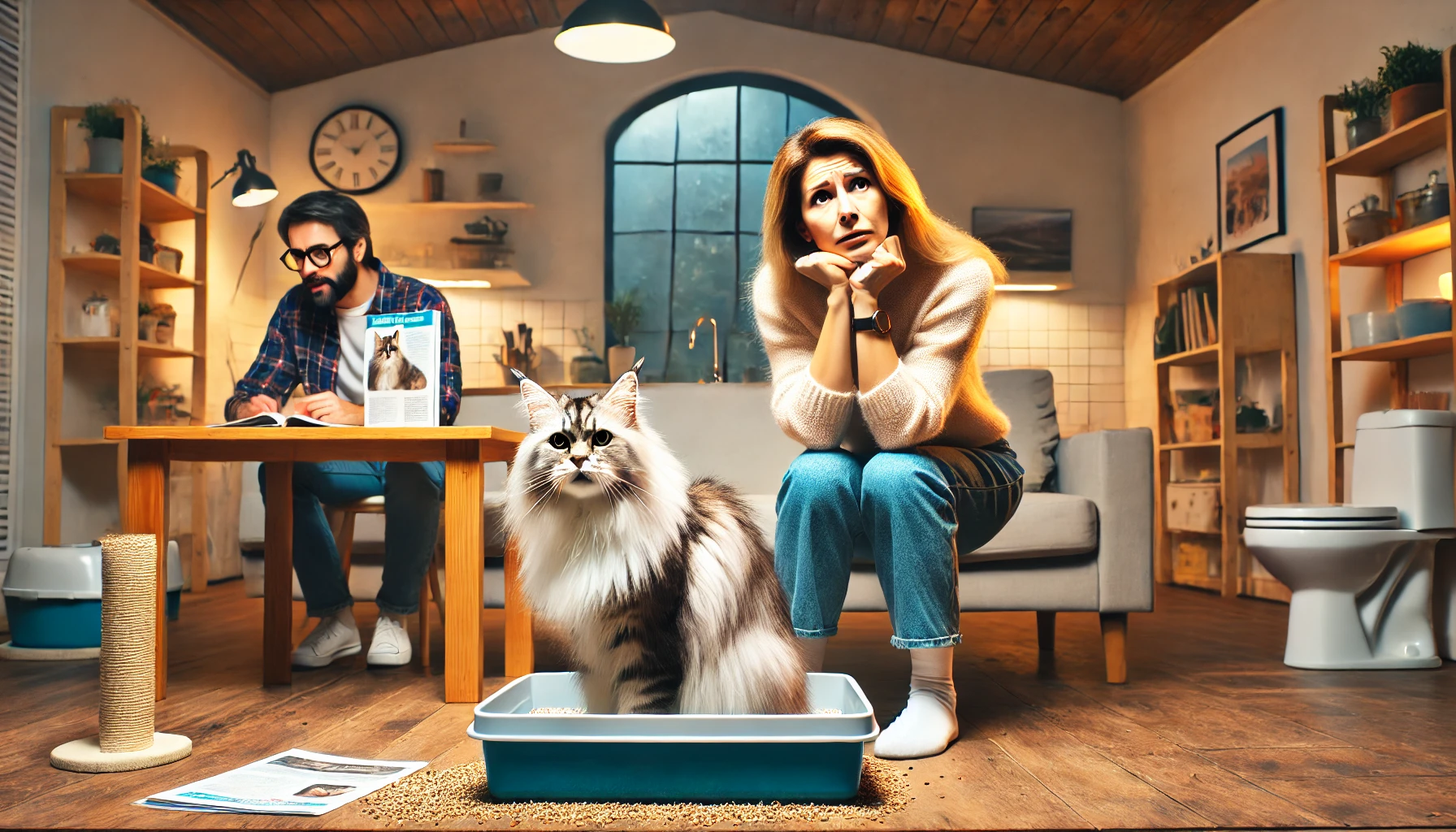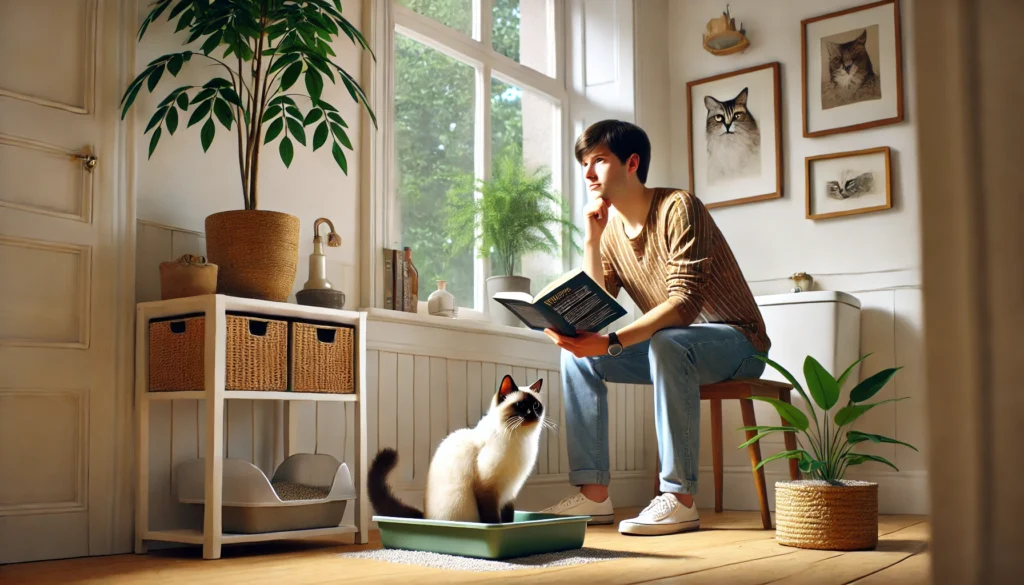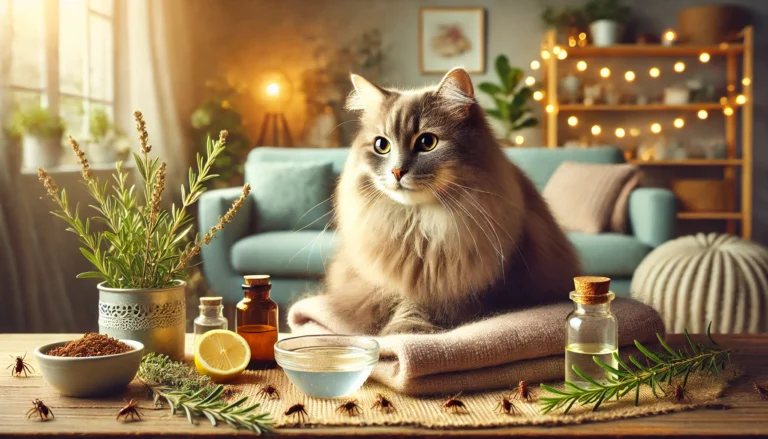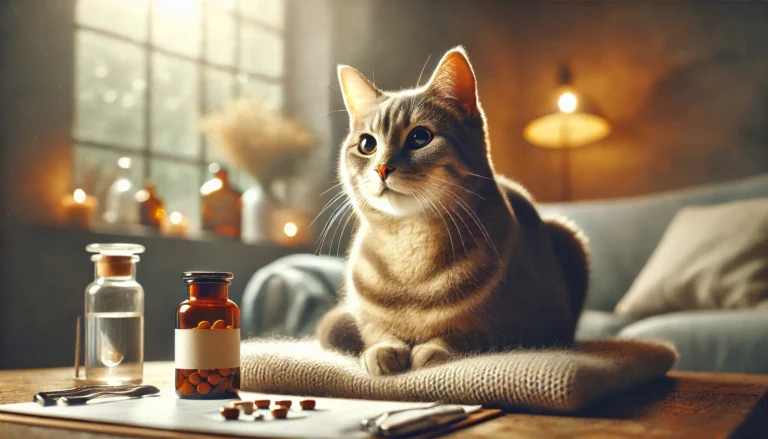Why Is My Cat Peeing a Lot?

My Cat Peeing a Lot
Why Is My Cat Peeing a Lot?YES!Excessive urination in cats can be concerning for pet owners. Known medically as polyuria, frequent urination can be a symptom of various underlying health issues. This article explores the causes, diagnostic procedures, treatments, and ways to manage if your cat is peeing a lot, ensuring you are equipped to help your feline friend stay healthy and comfortable.
Section 1: Identifying Excessive Urination
Definition of Polyuria
Polyuria refers to the condition where a cat urinates more frequently and often in larger volumes than usual. It’s an important clinical sign that can be associated with various underlying health conditions in cats. Typically, an adult cat might produce between 10 to 20 milliliters of urine per pound of body weight per day. When a cat consistently exceeds these amounts, it may be experiencing polyuria.
Observing Your Cat’s Behavior
- Guidelines on monitoring your cat’s urination habits.
- Tips for distinguishing between behavioral urination issues and medical symptoms.Monitoring your cat’s behavior is crucial for early detection of polyuria and potentially serious underlying health conditions. Cats are adept at hiding discomfort and illness, making it essential for owners to be vigilant about subtle changes in their behavior, particularly their urination patterns.
- How to Monitor Urination Habits
- Frequency of Urination: Keep track of how often your cat uses the litter box. An increase in the frequency of urination, especially if it appears urgent or excessive, can be a sign of polyuria.
- Volume of Urine: Notice the amount of urine each time. Larger clumps in clumping litter or more frequent changes of non-clumping litter are indicators of increased urine output.
- Behavior in the Litter Box: Watch for changes in how long your cat spends in the litter box. Spending more time or showing signs of distress during urination can indicate discomfort or other urinary issues.
- Tools and Tips for Effective Monitoring
- Litter Box Setup: Have multiple litter boxes in various locations around your home to encourage regular use and make monitoring easier. Ensure they are always clean and accessible.
- Daily Logs: Maintain a daily log of your cat’s litter box usage. Note times and any unusual occurrences, such as accidents outside the litter box or attempts to urinate with no urine produced.
- Weigh the Litter: For a more accurate measure, consider weighing your cat’s litter after cleaning to monitor the amount of urine being produced. This can be particularly helpful if you suspect polyuria.
Section 2: Common Causes of Frequent Urination in Cats
Urinary Tract Infections (UTIs)
Urinary tract infections (UTIs) are a common health issue in cats that can lead to increased frequency of urination, urgency, and discomfort, all of which are typical signs of polyuria. Understanding UTIs, their symptoms, causes, and treatment options is essential for cat owners to manage this condition effectively.
Kidney Disease
- Kidney disease is a prevalent condition in cats, particularly as they age, and it can significantly impact their urinary habits, including causing polyuria, or excessive urination. Understanding kidney disease, its symptoms, progression, and management is crucial for cat owners to effectively care for their pets.
- Symptoms of Kidney Disease in Cats
- Increased Urination and Thirst: As kidney function declines, cats often begin to drink more water and urinate more frequently, which is one of the earliest signs of kidney disease.
- Weight Loss and Decreased Appetite: Affected cats may show a gradual loss of appetite, leading to weight loss as the disease progresses.
- Lethargy and Weakness: As the kidneys fail to filter toxins effectively, cats can become lethargic and show decreased interest in activities they once enjoyed.
- Vomiting and Diarrhea: Toxin buildup in the bloodstream can cause gastrointestinal upset, leading to vomiting or diarrhea.
- Poor Coat Quality: Kidney disease can lead to a dull, unkempt coat as cats groom less and their health declines
Diabetes Mellitus
Diabetes Mellitus is a significant health condition in cats that can affect their overall well-being, including their urinary habits. It is characterized by the inability of the cat’s body to produce enough insulin or to use insulin effectively, leading to elevated blood glucose levels. This condition not only impacts glucose metabolism but also leads to various secondary symptoms, including polyuria, or excessive urination.
Symptoms of Diabetes in Cats
- Increased Urination and Thirst: One of the hallmark symptoms of diabetes is polyuria, accompanied by polydipsia, or increased thirst. Cats with diabetes may visit the litter box more frequently and consume more water than normal.
- Weight Loss Despite Normal or Increased Appetite: Despite eating normal or greater amounts of food, diabetic cats often experience weight loss due to the body’s inability to utilize glucose properly.
- Lethargy: Elevated blood sugar levels can lead to decreased energy and increased fatigue, making affected cats less active and more lethargic.
- Poor Coat Condition: Diabetes can affect skin health, leading to a dry, brittle coat due to poor nutrition and chronic dehydration.
Section 3: Diagnosing the Cause
Veterinary Diagnostic Process
When a cat exhibits signs of polyuria, such as increased frequency and volume of urination, it is crucial for a veterinarian to conduct a thorough diagnostic process. This approach helps determine the underlying cause, which can range from urinary tract infections to more complex systemic diseases like kidney failure or diabetes.
Initial Examination
- Physical Examination: The first step in the veterinary diagnostic process is a comprehensive physical examination. The vet will check the cat’s general appearance, body condition, and vital signs. Special attention is given to the abdominal area to feel for any kidney enlargement or pain, bladder issues, or signs of discomfort.
- Medical History Review: The veterinarian will review the cat’s medical history, including any previous illnesses, current medications, and the duration of symptoms. This historical data provides clues about the progression and potential causes of the symptoms.
Diagnostic Testing
- Urinalysis: A critical test in diagnosing causes of polyuria, urinalysis helps assess the kidney’s ability to concentrate urine and checks for signs of infection, crystals, or other abnormalities.
- Blood Tests: Comprehensive blood tests including a complete blood count (CBC) and serum biochemistry profile are performed to evaluate the overall health of the organs, particularly the kidneys and liver. Blood glucose levels are also measured to rule out diabetes.
- Imaging: X-rays or ultrasound may be used to visualize the kidneys, bladder, and other parts of the urinary tract. These imaging tests can identify stones, tumors, or structural abnormalities.
- Specialized Tests: Depending on the initial findings, more specialized tests like a blood pressure measurement, culture tests for infections, or an endocrine evaluation (for adrenal and thyroid glands) might be necessary.

Section 4: Treatment Options
Treating UTIs
Urinary Tract Infections (UTIs) in cats can be painful and may lead to more severe complications if left untreated. Effective treatment is crucial to alleviate symptoms and prevent recurrence. Here’s an overview of the therapeutic strategies commonly employed to manage UTIs in felines.
Antibiotic Therapy
- Choosing the Right Antibiotic: The cornerstone of UTI treatment is appropriate antibiotic use. Typically, a veterinarian will select an antibiotic based on the type of bacteria suspected or identified in the urine culture and sensitivity tests. It’s crucial to use the medication exactly as prescribed, even if the symptoms appear to resolve quickly.
- Duration of Treatment: Depending on the severity of the infection, the course of antibiotics may last from 7 to 14 days or longer for more complicated cases. Completing the full course is essential to ensure all bacteria are eradicated.
Pain Management
- Anti-Inflammatory Medications: Cats with UTIs often experience significant discomfort. Your veterinarian may prescribe anti-inflammatory drugs to reduce bladder inflammation and alleviate pain.
- Special Considerations: Care is taken when using certain medications, particularly in cats with kidney disease or other health issues that could complicate their use.
Increasing Water Intake
- Encouraging Hydration: Increasing water consumption is critical in the treatment and prevention of UTIs. More fluid helps flush out bacteria from the urinary tract and dilutes the urine, reducing the risk of crystal formation.
- Wet Food: Switching to or increasing the proportion of wet food in your cat’s diet can help increase their overall fluid intake.
Managing Kidney Disease
- Long-term management strategies for cats with kidney disease.
- Dietary changes and medications that can help manage symptoms.
Diabetes Management
- Insulin therapy and dietary adjustments.
- Monitoring and adjusting treatment based on response.
Treatment for Other Conditions
- Specialized treatments for conditions like hyperthyroidism or liver issues.
do you know
Cat vomiting is a common concern among pet owners, but it can be a source of stress when it happens repeatedly. While some causes of vomiting in cats are harmless, others may indicate more serious underlying health issues. This article will cover all aspects of cat vomiting, including the causes, types, and what you should do if your cat is vomiting, offering a comprehensive guide for concerned cat owners.
Section 5: Managing Your Cat’s Condition
Home Care Tips
Caring for a cat with health issues, whether it’s related to frequent urination, urinary tract infections, or any chronic condition, requires attentive and thoughtful management at home. Here are some essential home care tips to help ensure your cat remains comfortable, healthy, and as free from stress as possible.
Creating a Comfortable Environment
- Restful Space: Ensure your cat has a quiet, comfortable area to rest away from high-traffic zones in the home. This space should have soft bedding and be easily accessible, especially for cats with mobility issues or discomfort.
- Temperature Control: Maintain a comfortable room temperature as cats with health issues may be more sensitive to cold or heat.
Nutrition and Hydration
- Appropriate Diet: Feed your cat a diet that suits its specific health needs. This might involve low-protein diets for kidney issues, high-fiber foods for digestive problems, or moisture-rich foods for urinary health. Consult your veterinarian for the best dietary strategy.
- Encourage Drinking: Place multiple bowls of fresh water around your home to encourage your cat to drink regularly. Consider using a cat water fountain to attract your cat to drink more, as the movement of water can be enticing.
Litter Box Management
- Accessibility: Make sure the litter box is easily accessible, especially for cats with arthritis or mobility issues. Consider a low-sided litter box for easy entry and exit.
- Cleanliness: Keep the litter box clean by scooping it daily and changing the litter regularly to encourage use and prevent issues like UTIs.
Grooming and Hygiene
- Regular Grooming: Regularly brush your cat to remove loose fur and prevent matting, especially for cats that may no longer groom themselves effectively. This not only helps with hygiene but also offers a chance for bonding.
- Sanitary Clipping: For long-haired breeds or cats with urinary or fecal incontinence, consider sanitary clipping around the hindquarters to keep the area clean and odor-free.
Long-Term Management
Managing chronic conditions in cats requires a comprehensive and sustained approach to ensure their health and quality of life. Whether dealing with kidney disease, diabetes, or chronic urinary issues, long-term management involves regular monitoring, consistent treatment, dietary adjustments, and lifestyle modifications.
Consistent Veterinary Care
- Regular Check-Ups: Schedule regular veterinary visits to monitor the progress of your cat’s condition. These check-ups typically involve blood tests, urine tests, and physical examinations to assess the effectiveness of current treatments and make necessary adjustments.
- Ongoing Assessments: Chronic conditions often evolve, requiring adjustments in medication, diet, or overall management strategies. Continuous assessment helps in adapting the treatment plan to meet the changing needs of your cat.
Dietary Management
- Specialized Diets: Many chronic conditions in cats can be managed or alleviated through specialized diets. For example, kidney disease may require a diet low in protein and phosphorus, while diabetes might benefit from a low-carb, high-protein diet.
- Hydration: Encourage water intake by providing fresh water daily and incorporating wet food into the diet, especially for conditions like kidney disease where hydration is crucial.
Medication Adherence
- Routine Medication: Administer all medications as prescribed. Setting reminders can help ensure you do not miss any doses.
- Adjustments: As your cat ages or if there are changes in its condition, medication types and dosages may need adjustment. Regular communication with your veterinarian is essential to manage this effectively.
Environmental and Lifestyle Adjustments
- Stress Reduction: Minimize stress in your cat’s environment as stress can exacerbate many chronic conditions. Provide a safe, quiet space for your cat to retreat to when stressed.
- Physical Activity: Maintain a moderate level of activity to help manage weight and improve overall health, adjusted according to your cat’s abilities and condition.
Monitoring and Early Detection of Complications
- Watch for Changes: Be vigilant for any new symptoms or changes in your cat’s behavior that might indicate complications or progression of the disease.
- Early Intervention: Early detection of complications can significantly impact the management of chronic conditions. Prompt veterinary care can prevent more serious issues and improve outcomes.
Supportive Care
- Comfort Measures: As cats with chronic conditions may experience pain or discomfort, consider pain management strategies and other supportive care measures discussed with your veterinarian.
- Quality of Life Considerations: Regularly assess your cat’s quality of life to ensure that treatment goals align with maintaining or improving it. This may involve pain management, nutritional support, and other comfort-focused treatments.
Conclusion
Successfully managing chronic health issues in cats is an ongoing commitment that demands attentiveness, consistency, and a deep understanding of your pet’s needs. Recognizing the signs of excessive urination and other symptoms early on is crucial for timely and effective intervention, which can significantly improve the outcome for your cat.Chronic conditions, whether they involve urinary issues, kidney disease, diabetes, or other long-term health problems, require a multifaceted approach. This includes regular veterinary care to monitor the condition, tailored treatments such as medications or special diets, and adjustments to the home environment to support your cat’s comfort and well-being.
Why is my cat producing too much urine?
When you notice your cat peeing a lot, it could be due to a condition known as polyuria. This excessive urine production can stem from various causes, including kidney disease, diabetes mellitus, and hyperthyroidism. These conditions affect the body’s ability to concentrate urine or regulate fluids properly. Additionally, increased water intake due to changes in diet or environment can also lead to more frequent urination. If your cat suddenly starts to produce a significantly higher amount of urine than usual, it’s crucial to consult a veterinarian to determine the underlying cause and appropriate treatment.
How much is too much peeing for a cat?
Normally, a healthy cat may urinate between two to four times a day. If you notice that your cat is visiting the litter box more often than this, especially if they are producing a lot of urine each time, it might be a sign of a problem. Cat peeing a lot can indicate health issues like urinary tract infections, diabetes, or kidney disease. Monitoring how much your cat pees can be crucial for early detection of these conditions. If there is a noticeable increase in frequency or volume, it’s advisable to seek veterinary advice.
When should I worry about my cat peeing?
You should start to worry if you notice any changes in the frequency, odor, color, or amount of urine your cat produces. Signs that should particularly raise concern include your cat peeing a lot more or less than usual, signs of pain while urinating, blood in the urine, or urinating in unusual places. These symptoms can indicate urinary tract infections, blockages, kidney problems, or other serious health issues. Prompt veterinary evaluation is essential to diagnose and treat the underlying cause effectively.
Why is my cat peeing every 30 minutes?
If your cat is peeing every 30 minutes, it’s an indicator of an issue that requires attention. Frequent urination, known as “Cat Peeing a Lot,” can be caused by conditions such as urinary tract infections, bladder stones, or more chronic issues like diabetes or kidney disease. This frequent need to urinate may also be accompanied by discomfort or pain, which could further suggest inflammation or infection. Consulting with a veterinarian is crucial to determine the cause and find an appropriate treatment to relieve your cat’s symptoms.
How do I know if my cat has a UTI?
Signs that your cat may have a urinary tract infection (UTI) include frequent trips to the litter box, difficulty urinating, crying or straining while urinating, and blood in the urine. You might also notice your cat peeing a lot in small amounts, or having accidents outside the litter box. Unpleasant odor from the urine or excessive licking of the genital area are additional indicators. If you observe any of these symptoms, it is important to consult a veterinarian who can confirm a UTI through urine tests and prescribe appropriate antibiotics.
Do cats pee less when it’s hot?
Cats tend to drink less and consequently pee less when it’s hot, primarily if they are inactive or finding cool places to rest. However, it’s crucial to ensure that your cat stays hydrated during hot weather to prevent dehydration and related health issues. Providing continuous access to fresh water and encouraging your cat to drink are important steps in maintaining their health during warmer periods.
Do dehydrated cats pee a lot?
Dehydrated cats typically do not pee a lot; instead, they may urinate less frequently because there is less fluid available to excrete. Dehydration in cats can lead to concentrated urine that might appear darker and more odorous. If you notice your cat peeing less and suspect dehydration, it is crucial to increase their fluid intake and consult a veterinarian. Signs of severe dehydration include lethargy, dry mouth, and sunken eyes, and require immediate veterinary care.
Does cold water get cat pee out?
Cold water can be effective in removing fresh cat urine stains because it helps prevent the urine from setting into the fabric. For best results, blot the area with cold water as soon as possible and continue to apply and blot until the stain is removed. Avoid using hot water initially, as it can cause the proteins in the urine to coagulate and set the stain further into the fabric.
Do cats pee more on wet food?
Cats that eat primarily wet food might appear to pee more. This is because wet food contains a significant amount of water (typically around 70-80% moisture content), which naturally increases the cat’s overall fluid intake and urine output. While this might mean more frequent trips to the litter box, it’s generally beneficial for a cat’s urinary health as it helps keep the urinary system flushed and reduces the concentration of urine, which can help prevent the formation of crystals and stones.






